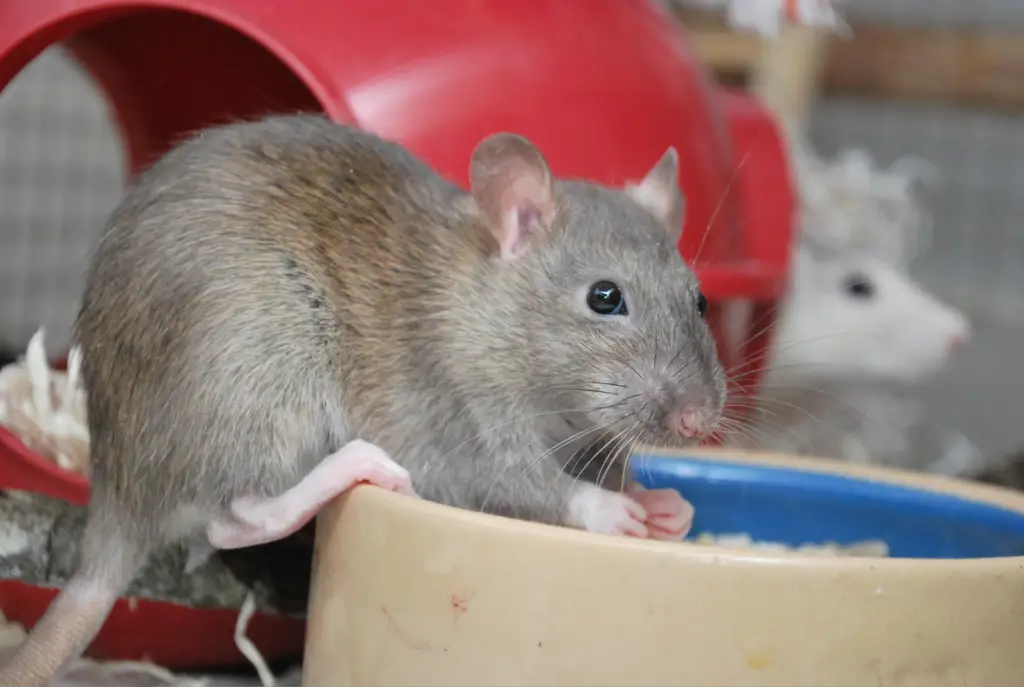1. Cats Always Land on Their Feet

It’s commonly believed that cats have a magical ability to land on their feet every time they fall. While it’s true that cats have a “righting reflex,” this doesn’t guarantee they’ll always land safely. The reflex helps them rotate their bodies mid-air to land on their feet, but it’s not foolproof. Cats can still get hurt if they fall from high places, especially if they don’t have enough time to fully rotate or the fall is too fast. Cats’ ability to right themselves is influenced by height, with smaller falls being easier to recover from. However, higher falls, like from skyscrapers, can lead to serious injuries, despite their ability to twist in the air.
Moreover, even though cats may appear agile and invincible, they can suffer broken bones, sprains, or internal injuries. High-rise syndrome, as discussed by PetMD, is a phenomenon where cats fall from windows or balconies, shows that while some cats land safely, many others do not. Interestingly, cats’ ability to survive falls is often attributed to their flexible bodies and lower terminal velocity, which helps them slow down. So, while cats do have an impressive reflex, they aren’t immune to harm if they fall from great heights.
2. Goldfish Have a 3-Second Memory

Many people think goldfish only have a memory span of a few seconds, but that’s a myth. Research has shown that goldfish have much better memory capabilities than most people give them credit for. In fact, studies have proven that goldfish can retain information for up to five months! They can learn simple tasks, recognize their owners, and even remember patterns. Goldfish are also capable of associating certain cues with rewards, which shows that they have cognitive abilities far beyond a few seconds. This misconception likely comes from the fact that goldfish often swim in repetitive patterns in their tanks, giving the illusion of forgetfulness.
However, according to National Geographic, they are actually very intelligent creatures and can be trained to respond to certain sounds, colors, or even their name. The myth of their short memory might also stem from the fact that they often live in small tanks with little environmental change, making it harder to see their memory skills in action. Goldfish are also known to recognize their surroundings and adapt to them, showing how sharp their memories really are. So, next time you hear someone say goldfish have a 3-second memory, you can confidently set the record straight!
3. Dogs See the World in Black and White

A widely believed myth is that dogs see only in black and white, but that’s not the case! While dogs don’t see the full range of colors that humans do, they certainly perceive more than just gray. According to Pedigree, dogs can see shades of blue and yellow, but they have difficulty distinguishing between red and green. Their color vision is similar to red-green color blindness in humans, which is why they might view red objects as grayish or brownish. This doesn’t mean that dogs can’t enjoy the world around them — they just see it through a different lens. Their eyes have fewer cones (the part of the eye responsible for detecting color), but they still have enough to perceive a more colorful world than we might think. So, when you toss a red ball for your dog, it may look more like a dull grayish color to them.
However, they are much better at detecting motion and have superior night vision, which is a huge advantage when hunting or exploring. Despite not experiencing a rainbow of colors like humans, dogs can still enjoy the world in their own way. Understanding how dogs see the world can help you better cater to their needs, such as choosing the right toys that stand out in their vision.
4. You Should Only Feed Dogs Dry Dog Food

There’s a common belief that dry dog food is the only option for your pet, but that’s not true. While dry food is convenient and nutritionally balanced for most dogs, it’s not the only choice available. Many dogs do well on a combination of wet food, raw food, or even homemade meals, as long as the meals are properly balanced. According to The Spruce Pets, Wet food can be particularly helpful for dogs that struggle to chew or need extra hydration. Dogs with dental issues, older dogs, or those with certain health conditions may benefit from softer food that doesn’t require much effort to eat.
Raw or homemade meals, when properly prepared, can also be an excellent choice for dogs, providing them with fresh, natural ingredients. However, these options require careful planning to ensure they meet all of your dog’s nutritional needs. Dry food can be more economical and has the added benefit of helping with dental health by scraping tartar from their teeth. That said, it’s important to consult with a vet to determine the best diet for your dog’s specific needs based on their breed, age, and health. So, while dry kibble is a popular option, it’s not the only healthy way to feed your dog.
5. Barking Dogs Are Always Aggressive

It’s easy to assume that a dog barking is a sign of aggression, but barking is actually a natural form of communication for dogs. Dogs bark for a variety of reasons, and aggression is just one of many. They may bark to express excitement, alert you to danger, or signal that they need attention or want something. For some dogs, barking is simply an instinctive response to unfamiliar situations or noises, and it doesn’t necessarily mean they’re being hostile. Even a friendly dog might bark at strangers or new environments, not out of aggression, but because they’re curious or excited. Dogs may also bark when they’re feeling anxious, scared, or bored, especially if they are left alone for long periods. Understanding the context of the barking is crucial.
For example, a dog that barks at a doorbell may be expressing excitement or curiosity, not aggression. On the other hand, a growling dog combined with barking could indicate a more defensive stance. It’s important to differentiate between barking due to excitement or alertness and barking due to fear or territoriality. By observing your dog’s behavior and body language, you can get a clearer picture of why they’re barking, and it might not be aggression at all!
6. You Should Only Bathe Your Dog Once a Month

Many dog owners believe that they should only bathe their dogs once a month, but this is a myth that doesn’t fit every dog. The frequency of dog baths depends on a variety of factors, including breed, coat type, and lifestyle. Some dogs, especially those with oily or smelly coats, may require more frequent baths to keep their skin and fur clean. Others with drier coats may need less frequent bathing to avoid stripping their skin of essential oils.
For example, dogs that spend a lot of time outdoors or have long fur may need baths more often to remove dirt, debris, or tangles. However, overbathing a dog can lead to dry skin and irritation, so it’s essential to find a balance. Bathing once a month may be fine for some dogs, but others might need more or fewer baths depending on their specific needs. For dogs with skin conditions, allergies, or health issues, your veterinarian may recommend more frequent baths with special shampoos. The key is to observe your dog’s coat and skin and adjust their bath schedule accordingly. If your dog is getting dirty, smelly, or their skin appears irritated, it might be time for a bath.
7. You Should Give Your Pet Milk

Giving your pets milk seems like a harmless and even comforting gesture, but in reality, most pets, especially cats, are lactose intolerant. While it’s true that kittens can digest their mother’s milk as infants, adult cats and many other pets cannot properly digest lactose, the sugar found in milk. Lactose intolerance occurs when animals don’t have enough of the enzyme lactase, which is required to break down lactose in the digestive system. When pets, particularly cats and dogs, consume milk, they may experience stomach cramps, bloating, diarrhea, and other digestive issues.
This myth likely comes from the portrayal of cats drinking milk in cartoons, but it’s far from healthy for most adult animals. Giving milk as a treat can lead to unnecessary digestive upset and discomfort for your pet. Instead of milk, you can offer your pets treats that are specifically designed for them, or simply give them fresh water. If you want to give your pet something special, choose pet-safe treats instead of milk, which can cause more harm than good.
8. Pet Rats Are Dirty and Disease-Ridden

Rats often get a bad reputation as dirty, disease-ridden animals, but this is a common misconception. In fact, pet rats, particularly those kept as companions, are clean and highly social animals. They spend a lot of time grooming themselves and are generally very neat creatures. Unlike wild rats, which may carry diseases and live in unsanitary conditions, pet rats come from controlled environments and are often bred for their temperament and health. When kept as pets, rats require proper care, including clean cages, fresh food, and regular handling to keep them healthy.
They are intelligent creatures that can be trained to perform tricks and even recognize their owners. Pet rats enjoy being around people and can form strong bonds with their human caregivers. The myth of rats being dirty likely comes from their association with wild rats, which may live in unsanitary environments. With the right care, pet rats can live up to three years and are wonderful, low-maintenance companions. So, don’t believe the myth — rats can be clean, affectionate, and delightful pets.
9. All Fish Are Low Maintenance

Fish are often considered low-maintenance pets, but this isn’t always the case. While it’s true that fish don’t require daily walks or constant interaction, they still need a proper environment and regular care. Fish tanks need to be cleaned regularly, with water changes and proper filtration systems to ensure the health of the fish. Without proper water quality, fish can suffer from diseases, stress, and even premature death.
Fish also need the right temperature, lighting, and tank size, depending on the species. Some fish are social and thrive in schools, while others are territorial and should be kept alone. Researching the specific needs of each species is crucial for ensuring their well-being. Fish also need a balanced diet, which may include specialized food and occasional supplements. While they don’t require as much attention as a dog or


